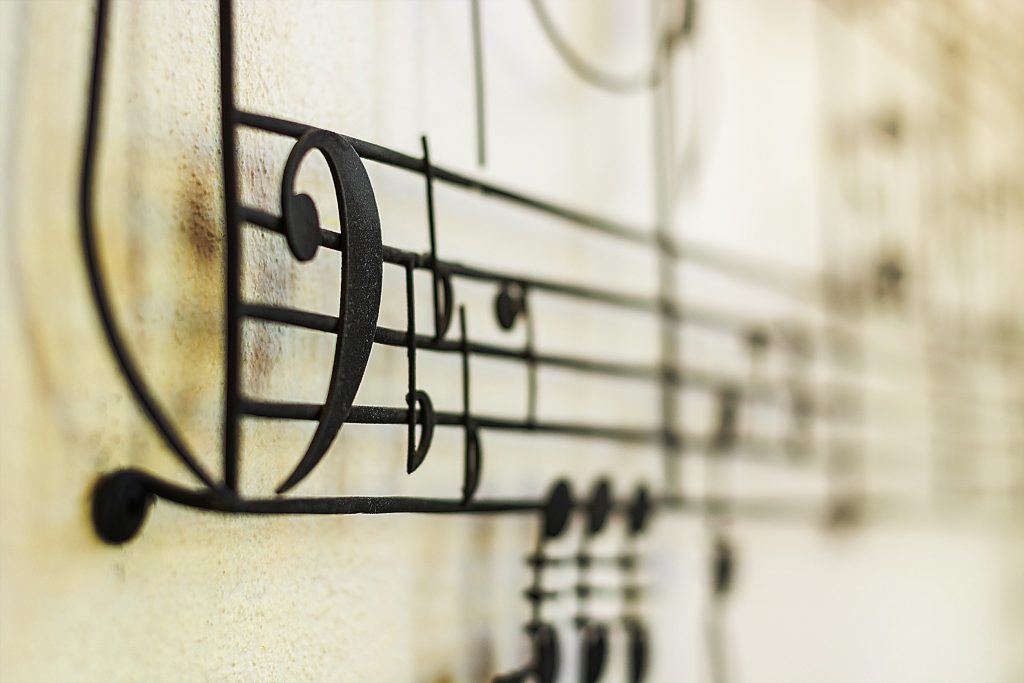Scales in Bass Clef: A Comprehensive Guide
It can’t be stressed enough the importance of scales, especially when dealing with the bass clef. It’s like the ‘yin’ and ‘yang’ of music – one complements the other. So let’s unravel the world of scales in bass clef together!
Defining Scales and Bass Clef
Before we delve into the nuances of scales in bass clef, it’s imperative we first understand these two elements individually.
What are Scales in Music?
Scales in music are sequences of notes ordered by pitch, serving as the building blocks for melody and harmony within musical compositions. They are foundational to understanding and practicing music, providing a framework for the creation of songs, solos, and improvisations across all genres and cultures.
There are various types of scales, each with its own unique set of intervals (the distance between notes), which give them distinct sounds and emotional qualities. The most commonly used scales include:
- Major Scales: Characterized by a bright, happy sound, major scales follow a specific pattern of whole and half steps. They form the basis of many musical pieces and are fundamental in music theory.
- Minor Scales: Known for their melancholic or somber tones, minor scales come in three main forms: natural, harmonic, and melodic, each with a different pattern of intervals.
- Pentatonic Scales: Consisting of five notes, these scales are simpler and widely used in folk music, blues, rock, and beyond. The minor pentatonic scale, in particular, is favored for soloing in blues and rock genres.
- Blues Scales: A variation of the minor pentatonic scale with an added “blue note,” these scales are essential to the blues genre and influential in jazz, rock, and other styles.
- Chromatic Scales: Incorporating all twelve pitches within an octave, chromatic scales are used for creating tension and drama in music, as well as for exercises in musical proficiency.
- Modes: Derived from the major scale, modes like Dorian, Phrygian, Lydian, Mixolydian, Aeolian (natural minor), and Locrian offer a variety of tonal flavors and are used in jazz, classical, rock, and ethnic music.
Understanding and mastering scales is crucial for musicians, as they help in developing technical skills, ear training, and a deep understanding of musical compositions. Scales not only dictate the tonality of a piece but also provide a palette from which melodies and harmonies are drawn, making them an indispensable tool in the creation and interpretation of music.
A Quick Refresh on Bass Clef
The bass clef, or F clef, is a music notation used primarily for lower pitch ranges. It’s the road map for bass instruments like the bassoon or cello, guiding them through the low-pitched landscapes of music.
Importance of Scales in Bass Clef
The importance of scales in bass clef for musicians, particularly those playing lower-pitched instruments like the bass guitar, cello, tuba, or double bass, cannot be overstated. Scales provide the foundational knowledge and technical proficiency needed to navigate the fretboard or fingerboard with ease, enabling players to contribute effectively to a wide range of musical genres. Here are several key reasons why scales in bass clef are crucial:
- Technical Development: Practicing scales improves hand strength, dexterity, and coordination, essential for executing complex passages and maintaining consistent rhythm and intonation.
- Harmonic Understanding: Scales in bass clef lay the groundwork for understanding harmonic structures and chord progressions, allowing bassists and low-pitched instrument players to anchor the harmonic foundation of ensembles.
- Improvisation Skills: A thorough knowledge of scales enables musicians to improvise confidently and musically, creating bass lines and solos that enhance the overall sound of a piece.
- Ear Training: Regular practice of scales helps develop a keen ear for pitch and harmony, aiding musicians in learning new pieces more quickly and playing with others more intuitively.
- Musical Vocabulary Expansion: Scales are the building blocks of melodies and harmonies, and mastering them in bass clef expands a player’s musical vocabulary, facilitating more expressive and creative performances.
- Versatility: Understanding and applying scales in bass clef allows players to adapt to different musical styles, from classical and jazz to rock and pop, making them more versatile and in-demand musicians.
In essence, scales in bass clef form the bedrock of musical proficiency for low-pitched instruments, equipping players with the skills necessary to explore and express a vast array of musical ideas with confidence and fluency.
Benefits of Learning Scales in Bass Clef
Learning scales helps improve finger dexterity, understand key signatures, and forms the backbone of improvisation and composition. Specifically, in bass clef, it allows musicians to explore the lower registers of music, enhancing their overall musical range and versatility.

Learning How to Read Scales in Bass Clef
Once you know the types of scales, it’s time to get reading! You can find more about notes on bass here.
Step-by-Step Guide to Reading
Identify the key signature:
This tells you which scale you’re dealing with.
Start from the root note:
This is the first note of the scale, and it gives the scale its name.
Follow the pattern:
Remember the whole and half step patterns for major and minor scales? Apply that here. It’s as simple as one, two, three!
Tips to Master Scales
Ready to take your bass clef scale mastery to the next level? Here are some tips to help.
- Start Slow and Use a Metronome: Begin practicing scales at a slow tempo to ensure accuracy in finger placement and timing. Gradually increase the tempo as you become more comfortable. A metronome will help you maintain a consistent rhythm, which is crucial for playing scales smoothly.
- Understand the Fretboard: Familiarize yourself with the notes on the fretboard. Knowing where every note is located will help you play scales more fluidly across different positions. This understanding will also help you improvise and create bass lines more effectively.
- Use Finger Exercises: Incorporate finger exercises into your practice routine. These exercises strengthen your fingers and improve dexterity, making it easier to play scales with precision. Practice using all four fingers to minimize unnecessary hand movements.
- Practice in Different Keys: Don’t limit yourself to practicing scales in just one key. Transpose the scales to different keys and positions on the fretboard. This will improve your adaptability and make you more versatile in various musical situations.
- Apply Scales Musically: Instead of just practicing scales up and down, apply them in a musical context. Create bass lines or solos using the scales you’re learning. This helps you understand how scales work within a song and improves your musicality.
Practice Makes Perfect
Like any new skill, practice is key. Regularly play scales in bass clef and, over time, you’ll see a noticeable improvement in your agility and understanding.
Using Technology to Aid Your Learning
In this digital age, technology can be your best friend in learning music. Apps like MuseScore or Tenuto provide interactive exercises for scales, improving your learning experience.
Wrapping Up: Your Journey with Scales in Bass Clef
Mastering scales in bass clef is a journey filled with exciting musical discoveries. As you familiarize yourself with these scales, you’ll find yourself delving deeper into the beautiful realm of music. Scales are the stepping stones to musical mastery, and with the bass clef, they will enable you to unlock the lower registers of music. Happy playing, and here’s to your musical voyage!
Frequently Asked Questions
1. Are scales in bass clef different from those in treble clef?
No, the pattern of scales remains the same in both clefs. The only difference is the range of pitches each clef covers.
2. Why should I learn scales?
Learning scales allows you to understand and play lower pitch ranges, which is crucial for bass instruments or the left hand in piano.
3. How many types of scales are there in music?
There are numerous types of scales, but the major and minor scales are the most commonly used ones.
4. What is the difference between major and minor scales?
Major scales are characterized by a bright and happy sound, while minor scales have a moody and sad tonality. The difference lies in their patterns of whole and half steps.
5. How can I quickly identify scales on a bass clef?
The key signature can help you identify the scale. Additionally, knowing the pattern of whole and half steps for major and minor scales can guide you.




